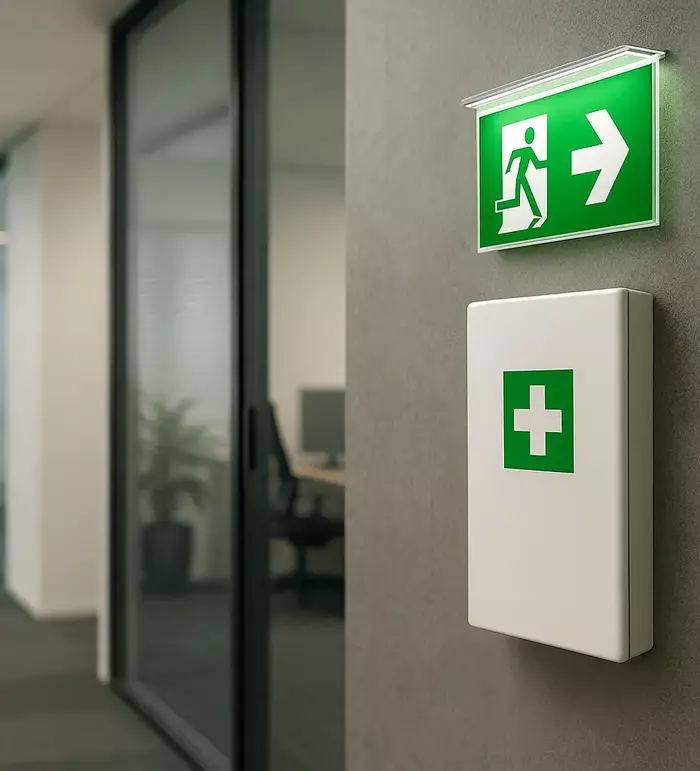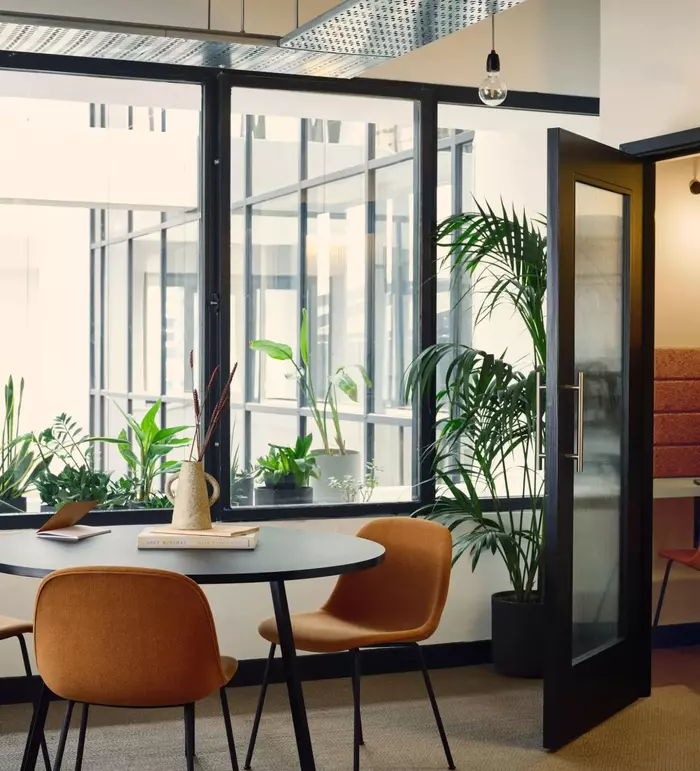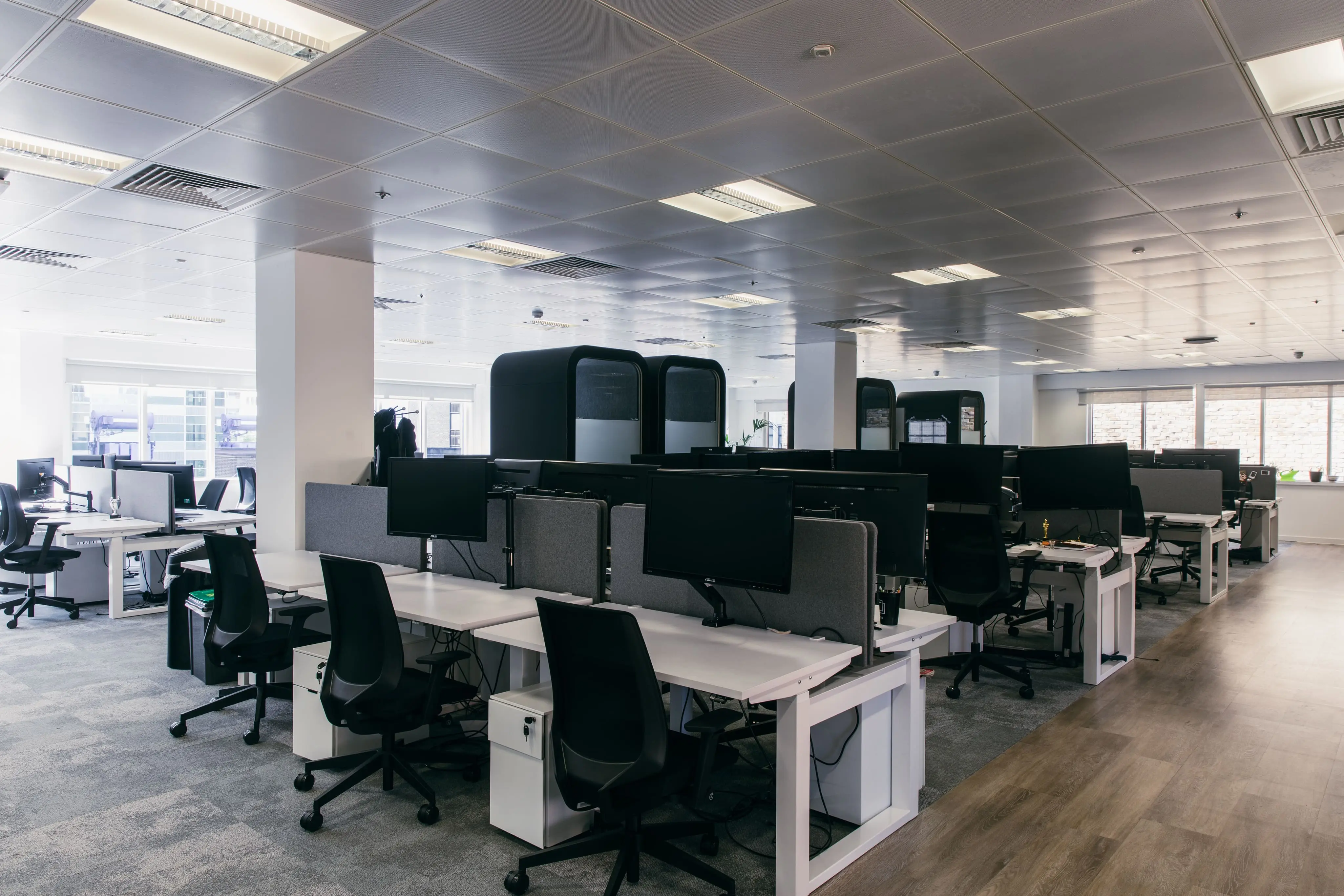5G mobile networks and low‑cost Internet‑of‑Things sensors are moving from the lab to the boardroom. Together, they promise offices that respond to people in real time, lighting that follows occupancy, video calls that never freeze and predictive maintenance that fixes itself overnight. Yet technology is only half the story. The real opportunity is to create workplaces that feel effortless so teams can focus on ideas, not infrastructure. As workspace specialists, we believe the 5G smart office is the next step in supporting employee well‑being and business growth.
Clients tell us they want spaces that work harder for humans, not just harder for devices. That means faster, safer connectivity and data‑driven insights woven into everyday tasks, without adding complexity for staff. This article explains where the market stands now, the gains you can expect by 2026 and the actions to take this year.
Key takeaways
- 5G smart office adoption will surge as private networks mature
- Global 5G IoT spend could reach $59.7bn by 2028 Markets & Markets
- Smart offices already top $53.9bn market value in 2024 Grand View Research
- Occupancy‑aware sensors cut energy use by up to 22% Schneider Electric
- Well‑designed tech‑enabled offices lift job satisfaction 31% CIPHR
- Early planning now avoids costly 2026 retrofit work
The state of 5G & IoT in 2025
5G reached more than two billion connections at the end of 2024, on track to represent 57% of all mobile links by 2030, according to the GSMA Mobile Economy Report. At the same time, analysts at Grand View Research estimate the global 5G IoT market will jump from USD 7.7bn in 2024 to USD 89bn by 2030. Office demand forms a significant slice of that curve.
Private 5G networks are progressing fast. Global Market Insights values the enterprise private‑network segment at USD 2.9bn in 2024 with a 39% CAGR forecast through 2034. Yet many organisations remain in pilot mode, waiting for clearer business cases and affordable devices. Flexioffices hears similar caution from clients who want proof that investments directly boost productivity and staff experience.
Why 5G unlocks the next smart‑office leap
Today’s Wi‑Fi is excellent for laptops and phones, but struggles with thousands of always‑on sensors that stream data around the clock. 5G solves that bottleneck through low latency, higher device density, deterministic performance and stronger security. For people on site, the net result is simpler: meetings start on time, video walls stay crisp, and building services respond instantly. Staff no longer notice the network; they notice the freedom to get work done.
Five ways 5G & IoT will reshape offices by 2026
First, 5G removes the cabling that locks rooms to single purposes. Meeting suites can morph into VR training zones, quiet pods or pop‑up media studios overnight. Second, live data drives decisions from energy loads to catering orders, cutting waste and carbon. Finally, edge‑AI embedded in access points processes data locally, keeping sensitive information in‑house while slashing cloud traffic.
- Connected climate control – Occupancy and air‑quality sensors talk directly to HVAC units over 5G. Schneider Electric recorded 22% HVAC energy savings.
- Cable‑free desk booking – Ultra‑reliable, low‑latency links let docks, monitors and peripherals pair automatically with any desk.
- AI maintenance crews – Vibration sensors stream to edge servers that predict failures days ahead. Lenovo reports 30% lower energy spend from similar analytics.
- Holographic collaboration – Sub‑10 ms latency enables life‑size mixed‑reality meetings without motion sickness.
- Hyper‑personal workplace apps – Positioning data powers apps that adjust lighting and suggest meeting rooms, boosting focus.
Challenges leaders must tackle
Spectrum licensing for private 5G differs by region and can stretch timelines. Skills gaps in RF planning and edge security mean many IT departments will need external partners. Budget holders still weigh ROI: a phased pilot is essential before whole‑building rollouts.
There is also the human element. Staff must trust that sensors respect privacy. Transparent data‑handling policies and clear opt‑in features will set responsible employers apart. Finally, integration complexity grows with each vendor added. Choose open, standards‑based platforms and insist on multi‑year support road maps.
Getting ready: practical steps for FM & IT teams
Investing wisely starts with a structured plan. Begin by mapping current connectivity pain points, dead zones, congested Wi‑Fi, and slow guest networks. Next, run a limited 5G proof‑of‑concept on one floor, collecting hard metrics: latency, throughput, energy saved and employee feedback.
- Conduct a spectrum feasibility check with a licensed partner
- Audit existing IoT devices; gauge which can adopt 5G modules
- Set KPIs for energy, uptime and user satisfaction before pilots
- Involve HR early to shape privacy guidelines and change comms
- Choose managed‑service options if in‑house RF skills are thin
Once these actions are complete, scaling across multiple sites becomes a predictable exercise rather than a gamble.
The road to 2026: what success looks like
Picture 2026: Employees badge in; the lift calls itself; their preferred desk rises to standing height; HVAC adjusts to personal comfort; and a generative‑AI assistant summarises overnight sensor data for the facilities team before 9 a.m. In this future, the network disappears, leaving a workspace that simply understands what people need. Flexioffices’ role is to pair clients with buildings and landlords with tech partners that can deliver this invisible support.
Conclusion
5G and IoT together are more than new pipes and gadgets. They underpin a people‑centric office that reacts in real time, saves energy and attracts talent. Firms that start small pilots now will avoid retrofit costs and reach full deployment by the milestone year of 2026.
FAQs
How does a 5G smart office differ from today’s Wi‑Fi office?
A 5G smart office uses private or network‑sliced 5G instead of (or alongside) Wi‑Fi. It offers stronger security, predictable latency and support for thousands of sensors without congestion.
Is 5G safe for employees?
Yes. 5G operates within international electromagnetic‑exposure limits. Health agencies worldwide confirm it is as safe as previous generations.
What upfront budget should I expect?
Early pilots typically start around £40–60 per sq m for radio hardware and sensors. Full‑building roll‑outs vary by size and complexity.
Can existing IoT devices join a 5G network?
Many Wi‑Fi or Zigbee sensors need plug‑in modules or gateways. For new projects, select multi‑band chipsets that support NR‑IoT from day one.
Does 5G replace wired Ethernet?
Not entirely. High‑throughput needs such as data‑centre links still rely on fibre. 5G removes many desk‑level cables but co‑exists with wired backbones.
















